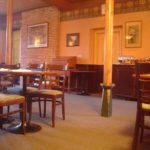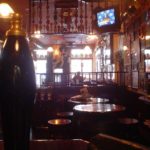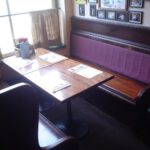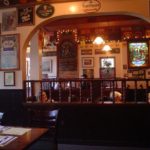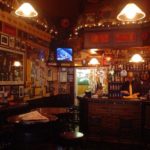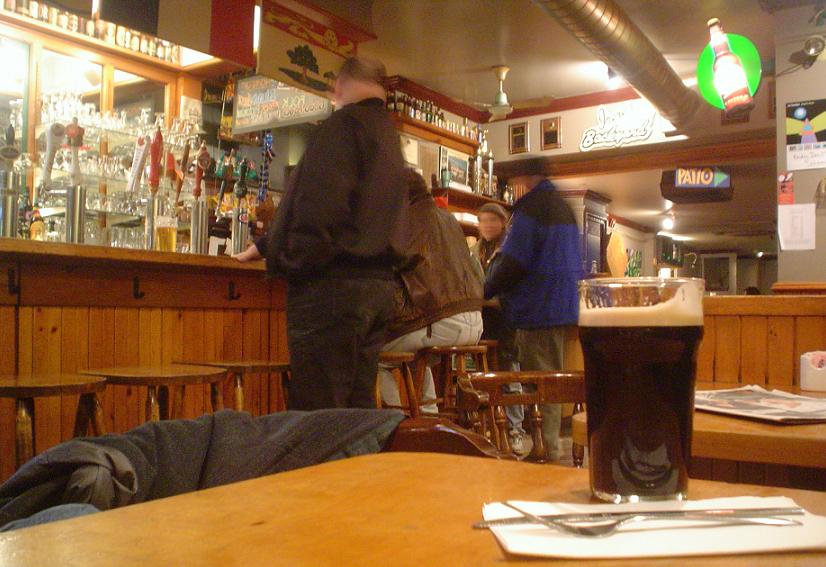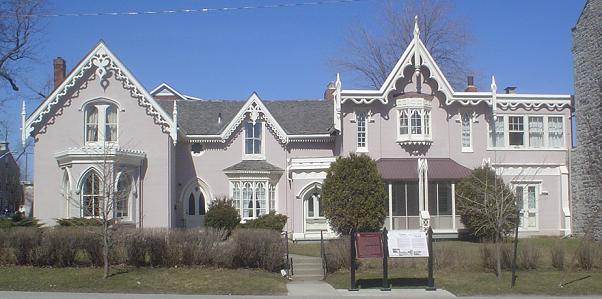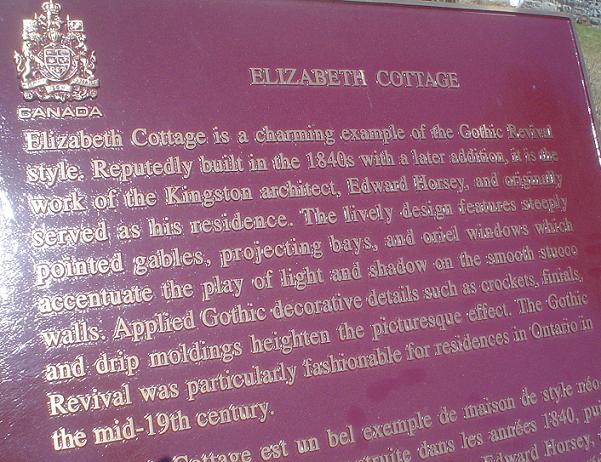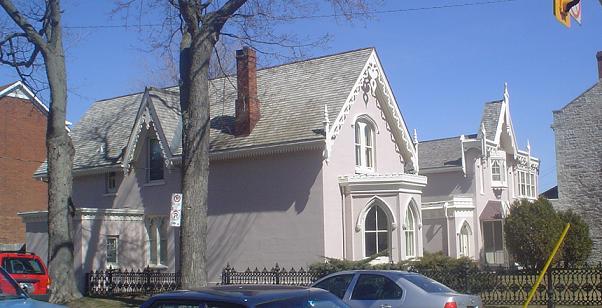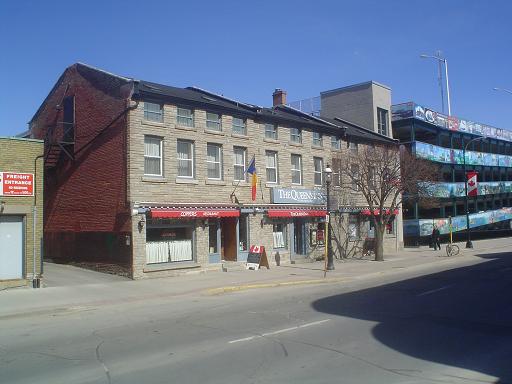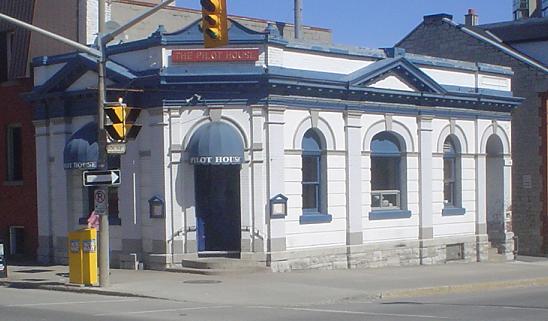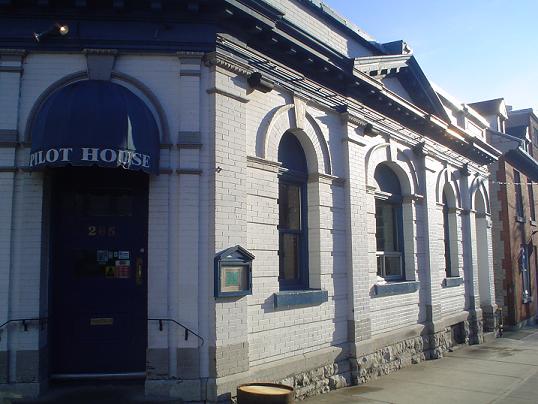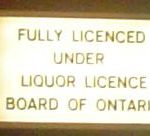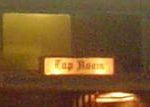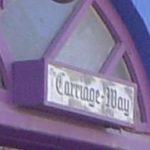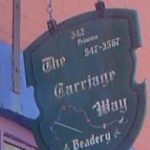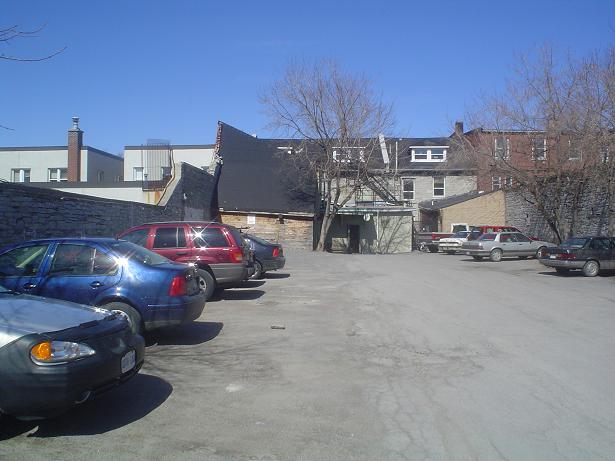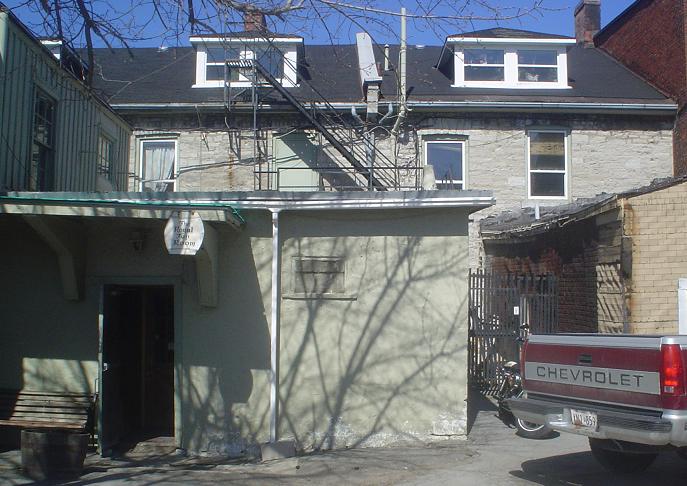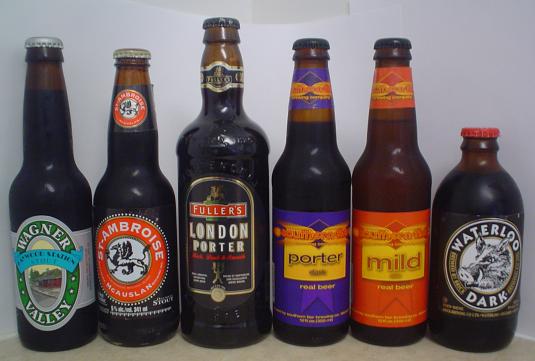
Three New Yorkers and one each from England, Quebec and Ontario
Here are six dark ales which I have stuck away over the last while to describe some of the differences. This is a special message to Nils who I think can start his hunt for a beer he likes with some of these.
If you were buying beer in 1880, these might appear ranked on a brewer’s list they are degrees of the same thing. On the light side in the latter part of the 19th century, pale ales ranges from light (dinner ales) through bitter/pale ale, extra special bitters, India pale ales to barley wine. Similarly we have the dark range from mild, dark, porter, stout (porter), extra stout, Russian/Baltic/Imperial stout. Gradations were marked by combinations of capital letters the most well known of which would be of the “XXX” label which would be a fairly strong pale. On top of that, just as browns are not all the same, neither are stouts. There are dry dry stouts like draft Guinness, extra stouts like Guinness in the bottle, strong stouts like Trinidad’s 7% Lion Extra Stout, milk stouts like Lancaster Brewing produces and Sweet Stouts which can be a light and 2.9%. Oatmeal stout, like these, is a sub-class all its own.
McAuslan’s St-Ambrose Oatmeal Stout: second from the left. When I see adds that make fun of American beer I think – what Canadian beer do I actually drink? This is it. From Montreal, St. Ambrose from McAuslan is on tap here in town at the Queen’s Grad House and at the Kingston Brew Pub, this stout had big body and the velvet touch. Tied with the products of Unibroue, also from Quebec, I cannot think of a finer Canuck brew. Licorice, coffee and chocolate in a sip that approaches thick and textured like espresso. McAuslan says:
At the World Beer Championship in 1994, St-Ambroise Oatmeal Stout received the second highest rating of the over 200 beers in the competition and won one of only nine platinum medals awarded. Brewed from 40 percent dark malts and roasted barley, this intensely black ale carries strong hints of espresso and chocolate. Oatmeal contributes body and a long-lasting mocha-colored head to this well-hopped beer.
Paddock Wood reminds us that rolled oats are added pre-gelatinized directly to mash. It “improves head retention, body, adds grainy flavour” all of which is on display with the McAuslan – very highly rated here, too.
Wagner Valley Caywood Station Oatmeal Stout: far left. This beer from Lodi New York in the Finger Lake district makes for a great comparator with the St-Ambrose as it also an oatmeal stout – which is really not a very popular style. The brewery says of the beer:
This robust, full-bodied oatmeal stout is rich in highly roasted malt flavor, rounded off by a touch of oats, caramel malt and Fuggles and Willamette hops… This robust, full-bodied oatmeal stout is rich in highly roasted malt flavor, rounded off by a touch of oats, caramel malt and Fuggles and Willamette hops.
Comments here include “like a mouthful of dirty pennies” and “silky smooth and sumptuous”. This stout is a little less carbonated than the St-Ambrose, which is good. Carbonation, along with acidic water, is a way of creating mouthfeel without spending money on hops or grain. If I have a complaint with the St-Ambrose, it is the carbonation level in the bottle that is not present in the draft. Wagner Valley does not have that. Not as death by mocha chocolate rich, it is nonetheless a fine example of the style.
Fuller’s London Porter: third from the left. A full pint sets you back $3.20 at the LCBO but it is worth it as there are few real porters going around and this one is one. Porter brewing was the vanguard of early industrial standardized production capturing much of the English speaking world’s beery imagination from around 1720 to about 1840. Just one London brewer in 1820 produced 300,000 barrels – nine million US gallons in a city of around 2 million. In 1814 one single vat of porter burst flooding local streets and drowning eight people.So when you drink porter, you are drinking history. As stated above, stout was originally stout porter and side by side it is clear. Where stouts rely on the darkest malts, the burnt flavors of black malt and roast barley, porters use chocolate malts and brown malts to provide a similarly big but more mellow flavour. As a result, hopping is also lighter than, say, Guinness Extra Stout which is one of the most highly hopped common traditional beers there is. It is still a mouthful, however, as Fuller’s example shows. Coffee with a hint of licorice, unsweetened cocoa, pumpernickel. Fullers says:
Fuller’s London Porter is a superb, award-winning beer. We’re proud to have won gold and silver medals at the 1999, 2000 and 2002 International Beer & Cider Competitions. The origins of Porter date back to London in the early nineteenth century, when it was popular to mix two or three beers, usually an old, well-vatted or ‘stale’ brown ale, with a new brown ale and a pale ale. It was time consuming for the publican to pull from three casks for one pint, and so brewers in London tested and produced a new beer, known as ‘entire’, to match the tastes of such mixtures. Using high roasted malts, ‘entire’ was dark, cloudy and hoppy. It was also easily produced in bulk and ideally suited to the soft well-water of London. Very quickly, it became popular amongst the porters working in Billingsgate and Smithfield markets, and gradually, the beer took on the name ‘Porter’, in recognition of its main consumers. Fuller’s London Porter captures the flavours of those brews perfectly, although you won’t find a cloudy pint these days! Smooth, rich, and strong (5.4% a.b.v.), our London Porter is brewed from a blend of brown, crystal and chocolate malts for a creamy delivery balanced by traditional Fuggles hops.
These guys like it – here is a good comment:
The mouth feel at the end is water which leads to a high drink ability, smooth and almost creamy. They way that all the flavors blend smoothly and subtly together in this beer is what makes it great. One that will fool people who don’t know that dark beer doesn’t necessarily mean strong and bold flavors. This is what I would call a perfect intro to porters.
I used to brew a pumpkin porter that needed a few pounds of roasted mashed pulp to show up in the flavour profile rather than just add body – bodacious it were, by the way. If you want to try a dark beer and like a good black coffee, you can’t go wrong with Fuller’s London Porter. A standard in the fridge around my place.
Southern Tier Mild: second from the right. Well I never expected this. A pale mild. So it is definitely the far end of the scale of darks. Why so? Because it is soft, it is lightly hopped and it is built for a session. Other pale milds I can think of are Manchester’s Boddingtons and Newfoundland’s Black Arse Horse. All look like a pale ale but are so recessed in flavour you would think you were drinking a light ale. Then you notice it taste good. Then you realize that your beer is not largely made up of Irish Moss and other seaweeds. Then you think mild is interesting after all. Maybe there’s a hint of orange peel and a little honey and a little sugar cookie – but only a little of each.The brewer, Southern Tier (of the very lower corner of western New York) says it is a beer that “deserves to be imbibed often”. As it had a little sweet, a little hop, a little grain, low carbonization and a soft water background that is a pretty good recommendation. These guys talk about its biscuit malt, doughy, bready. A small beer but that is what it wants to be.
Waterloo Dark Ale: far right. This is a beer I have liked but, like most Canadian micro-brews, is lighter in taste than the US brewers would make. How odd given our mass produced stuff holds itself out as being stronger than our southern cousins. Brewed by the Brick Brewing Company of Waterloo Ontario, who says:
A dark beer can be a very scary thought to some people. Surprise, surprise. There’s no other beer quite like Waterloo Dark, refreshingly light and delicate in taste but rich in colour. Don’t be afraid of the dark. surprise yourself.
Hmm. Not very hope instilling. Well, it is a dark…but a dark lager. I would have thought it was a dark ale, a little brewed style that is way less than a porter but bigger than a brown. No hop imprint like a US brown would have. A little molassas and a little brown sugar and a little lighter mahogony in hue than a cola: “After seeing this dark colour, I expected quite a bold, rich taste…” was a particlarly prophetic comment. Beer advocate gives it a 74% thumbs down. Yikes. They also categorize it as a Munich Dunkle lager, not something I would say I have had a large acquaintance with. I think that is actually pushing it. As I think this is really a pale ale with some caramel and maybe some other malts added. Watery end with a sour tang left in your mouth. I can leave it with this wag’s comment:
I’ve come to the conclusion that from my experience their beers seem to be very lacking in flavour and body. I do however love the stubbies though.
I do like stubbies, too, but from now on I will stick to Brick’s original Red Cap revival in the little tubby bottles.
Southern Tier Porter: The last of the set. It has sat for weeks in the back of the fridge, the ur-porter incarnate…or at least the ur-porter of the back of my fridge. Smelly of coffee and licorice. Tastey of coffee and blackberry and cocoa and tobacco. Easy-peasy good beer. Big and fresh. We like that on the committee. I did tell you there is a committee behind me, right. Anyway, the advocatonians say this, including the following:
After a hard pour, beer produces little to no head, and is not quite as dark brown/ruby as is to be expected by the style. Too much light gets through this one. Sweet roasted malt and chocolate are the predominant odors. More reminiscent of a milk stout than porter. Smokey in character, with a definitely sweet malt presence on the tongue. Not as complex and chewy as I like my porters, but thoroughly drinkable.
I have had smoked porter and smoked herring and smoked cheese so I am a wee bit surprised by the call that this is a smokey beer. A wee bit less than smokey but the faintest hint might be there. I do not know why a call can be made that something is more milk porter yet also smokey but go figure. The brewery talks about “overtones of chocolate ans espresso beans” – a bit blabalonian for me. It is bigish and yupping. Eat steak, drink this, live long.
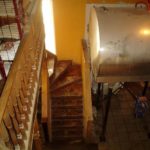




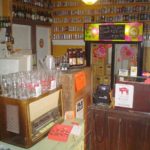
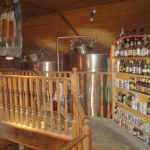
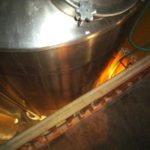

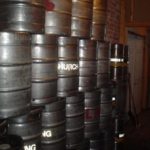
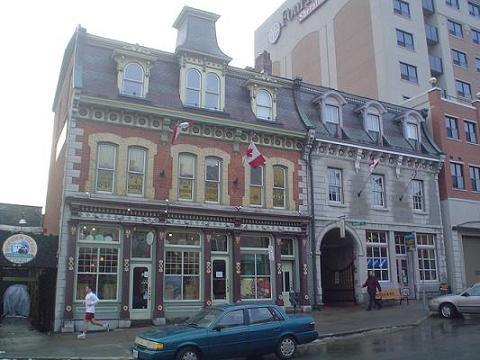
 I have been going to the Kingston Brew Pub for more than a decade. When we lived three hours drive away, during LBK (Life Before Kids) we planned long weekends around meals there. Now I work a block away and am happy because of it, even to pop in for the lunch special or a cup of coffee mid-afternoon. The
I have been going to the Kingston Brew Pub for more than a decade. When we lived three hours drive away, during LBK (Life Before Kids) we planned long weekends around meals there. Now I work a block away and am happy because of it, even to pop in for the lunch special or a cup of coffee mid-afternoon. The 

